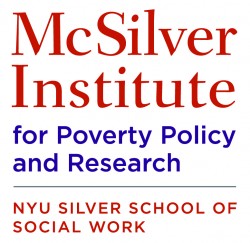In the Spotlight
A recent Supreme Court ruling on affirmative action has put race and access to higher education front and center as Universities around the country are graduating an estimated 1.6 million undergraduate students this year. However, enrollment of students of color is on the decline in states that refuse to consider race in their admission decisions. College education has long been identified in the United States to be a valuable tool when it comes to helping individuals climb out of poverty. Despite the impact college may have on economic mobility, the issue remains that students from low-income backgrounds, many of whom are students of color, are not obtaining degrees as successfully as their wealthier counterparts. This fact has nothing to do with whether students from low-income backgrounds are attending college – they are – but they are not graduating at the same rates as students with more financial resources. Instead, many are finding themselves discouraged, degreeless, and in debt.
When looking at college dropout rates, more than 40% of students attending a four-year college have not earned a degree after six years. Upon further analysis, the largest differentiating factor is clear: how much money their parents earn.
For the children of parents who hold a higher economic status, graduating from college is significantly more likely. What is currently occurring within American universities is what Anthony Carnevale, Director of the Georgetown University Center on Education and the Workforce, is calling the intergenerational transmission of class.
In the United States, only 14% of people whose parents did not receive college degrees have graduated. For students attempting to complete a four-year college degree who have parents without a degree, the task of navigating college presents itself with unparalleled challenges.
Direct Service Implications
For students whose parents have not earned a college degree, navigating the college experience can be a daunting task. The issues faced by low-income college students are not necessarily based on having a lack of financial resources but are more so attributable to a lack of college community support. For students at Boston based universities and at the University of Texas at Austin, efforts have been made to engage low-income students better to help build support networks and services.
What is often different between the academic abilities of low-income students and higher income ones is familiarity with the college experience and sometimes student confidence in achieving at a place that is new or unfamiliar. For direct service providers, whether it be professors or counselors, the challenges associated with being a first-generation college student must be taken into consideration in order to develop ways to tackle low graduation rates among these students. In addition, when hiring interns and staff, organizations can show an understanding that the playing field is not level for all students. For example, instead of attributing taking longer than four years to graduate as an individual shortcoming, consideration should be given to the often institutionalized and structural lifelong barriers (e.g. racism, sexism, and classism) that many students and their families experience.
—
Disclaimer: The views and opinions expressed in the Policy News Briefs are not necessarily the views of the McSilver Institute for Poverty Policy and Research or NYU’s Silver School of Social Work. If you have comments or suggestions about this service, contact us at mcsilver@nyu.edu.
Courtesy of McSilver Institute of Poverty Policy and Research who has kindly given SJS permission to syndicate this piece.
Sources:
Our authors want to hear from you! Click to leave a comment
Related Posts




